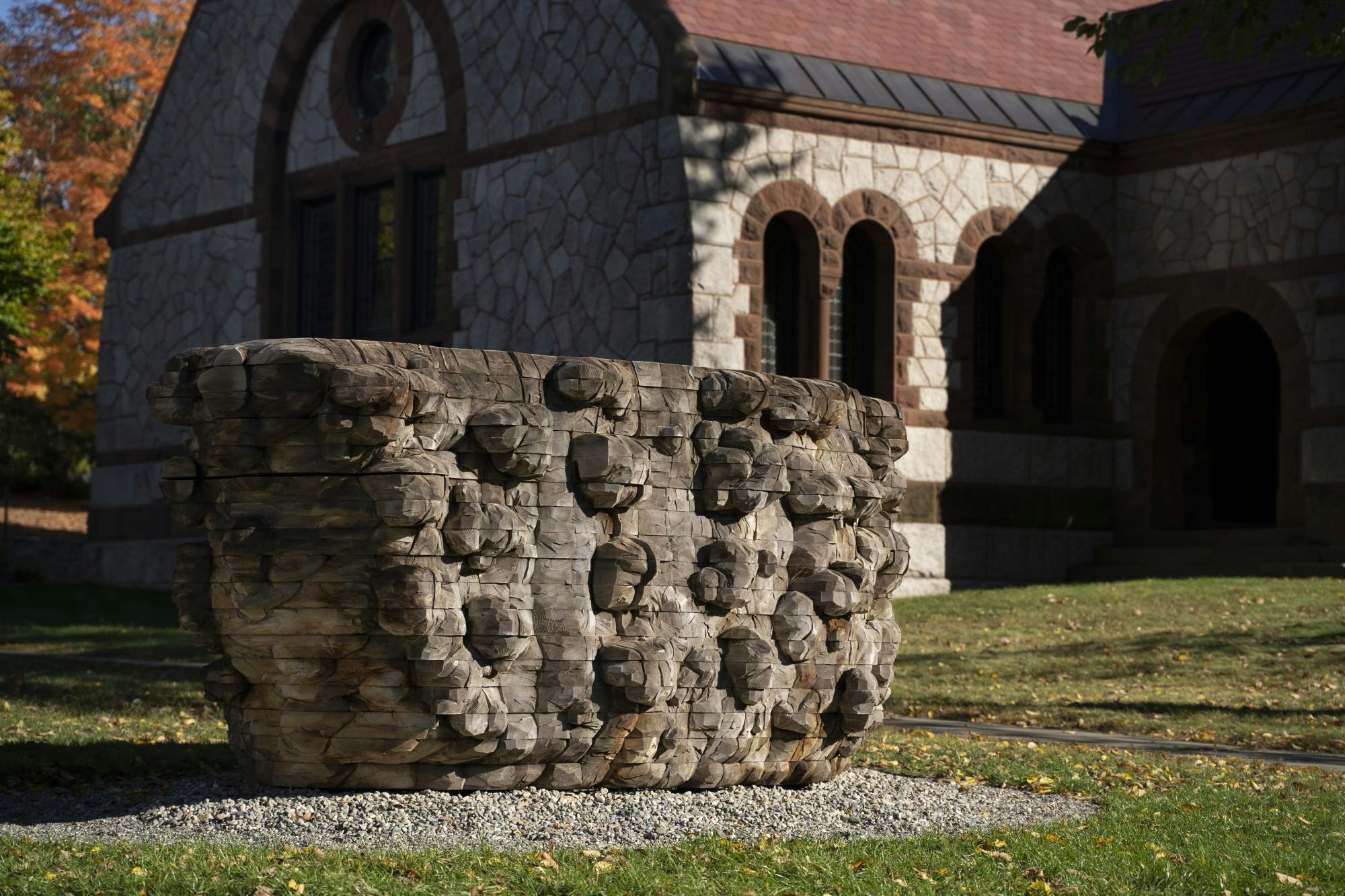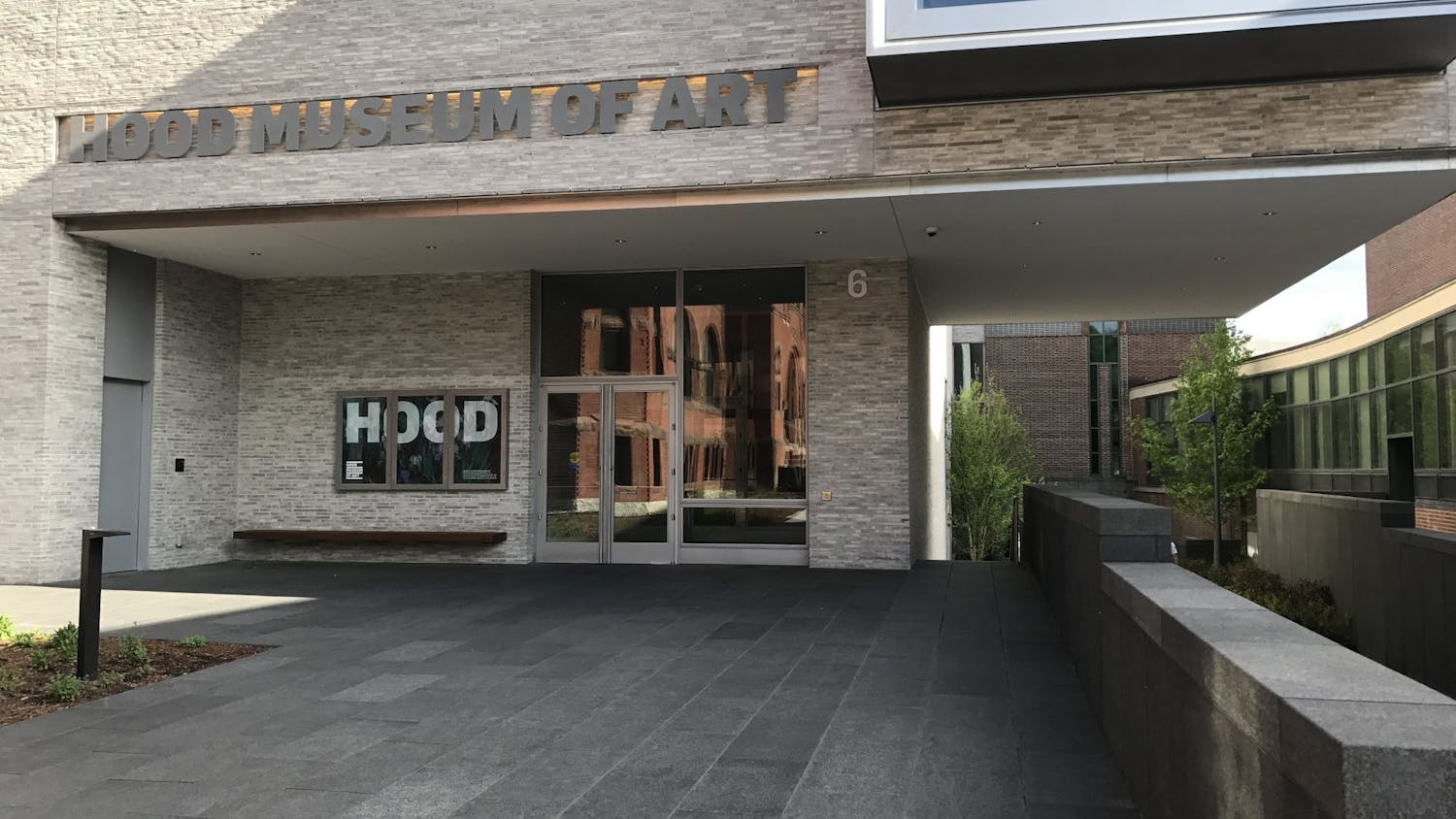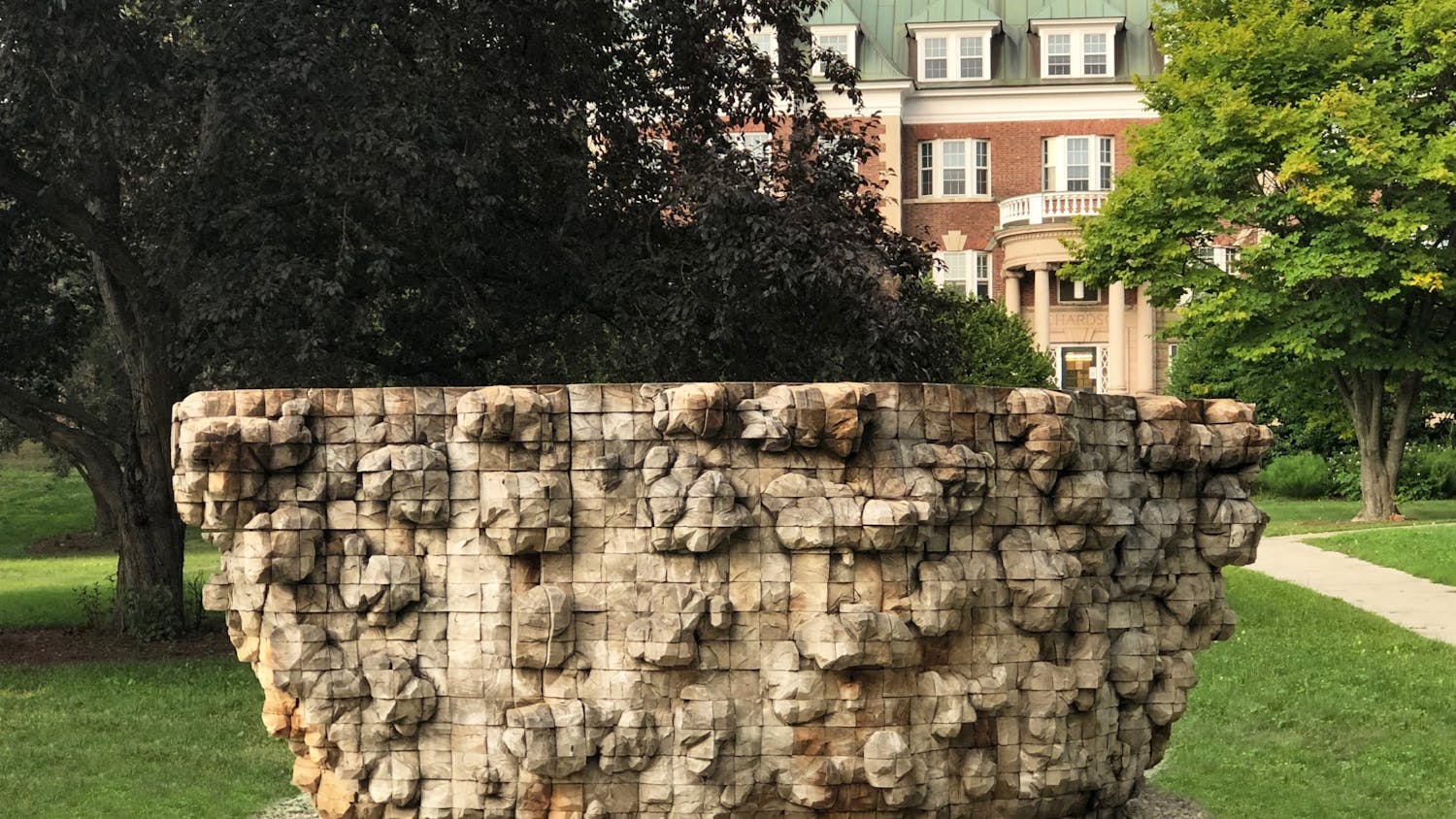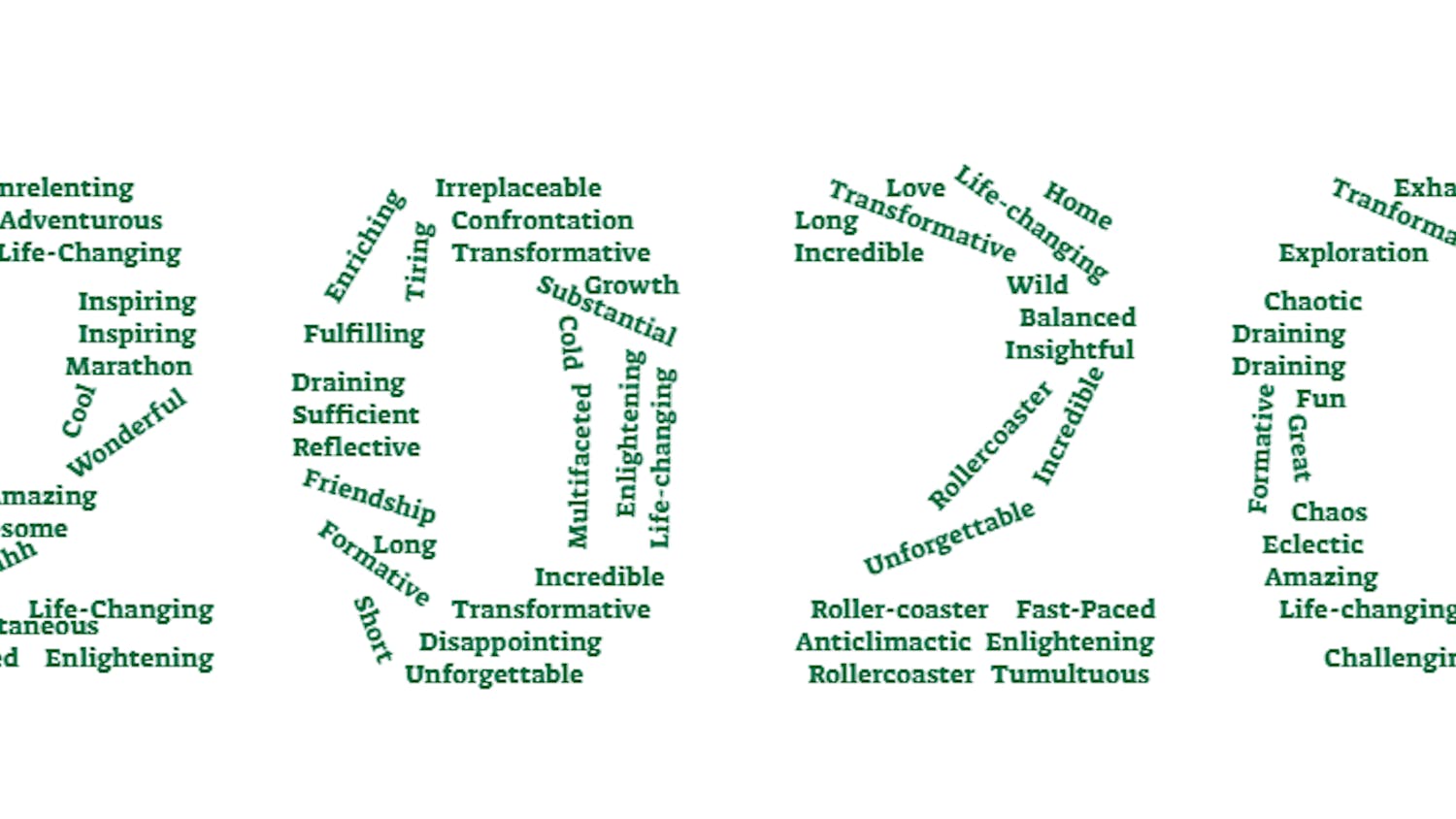In a virtual talk on May 5, Hood Museum of Art director John Stomberg hosted a conversation with sculptor Ursula von Rydingsvard that spotlighted her piece, “Wide Babelki Bowl,” a sculpture that is part of Dartmouth’s public art collection.
The talk marked the second segment of the Virtual Spotlight on Public Art program series, which is focused on the College’s collection of public art installations. Sponsored by the Hood and open to the public, the segments feature live conversations and Q&As with artists.
This segment began with a short video introducing “Wide Babelki Bowl,” created in 2007 and installed on campus next to Rollins Chapel in August 2020. According to von Rydingsvard, “Babelki are the popcorn stitches that get knit onto sweaters, but in Polish, they also refer to the little lambswool fluff balls attached to the neck or waist of a sweater.” The sculpture was crafted such that the texture of the bowl replicated the popcorned babelki stitching.
During the Q&A, Stomberg presented slides and images of the sculpture, its installation, and other works by von Rydingsvard at the San Francisco Museum of Modern Art and the Philadelphia Museum of Art. “Wide Babelki Bowl” was recently donated to Dartmouth by Jens and Margarit Jacobs, who originally commissioned the piece for their Woodstock, Vermont farm. Stomberg noted that acquiring artwork in this way is unusual, as The Hood curates a collection tailored to the Dartmouth image, which he said most gifts do not fit.
According to Stomberg, the Jacobs had stayed in touch with von Rydingsvard’s gallerist. When the couple expressed interest in donating their commissioned sculpture, von Rydingsvard’s gallerist reached out to Stomberg, aware of Stomberg’s long-standing interest in the Brooklyn-based artist’s work. A personal connection to the College helped solidify the donation — according to von Rydingsvard, her grandchild attended Dartmouth.
Von Rydingsvard discussed the connection between her work and her personal life, describing her childhood living on a farm during World War II. Hoping for a different life for their seven children, von Rydingsvard’s parents left the farm, spent time in eight postwar refugee camps and eventually made their way to the United States. Despite the motif of babelkis being a call to her childhood, von Rydingsvard insists that her history is not an active influence in most of her works.
“Wide Babelki Bowl” is representative of von Rydingsvard’s work, as she is best known for her large wooden sculptures located in outdoor public spaces. Since the 1970s, cedar beams from Southwestern Canada have become a signature of her work. She recalled carving cedar planks as a graduate student at Columbia University and immediately realizing her connection to the material.
After finishing a sculpture, natural forces change the color and shape of the cedar over time, a lifelike quality that von Rydingsvard said she enjoys.
Made from around 600 or 700 cedar boards, “Wide Babelki Bowl” is smaller than many of von Rydingsvard’s other pieces.
“It’s cedar, it’s wood, it just seems so incredibly ‘Dartmouth’ to me,” Stomberg said. “It’s rational and irrational, it’s strong and small and big, and all of these things that we try and load into the idea of ‘what is Dartmouth?’ It’s adventurous, right?”
Curator of academic programming at the Hood Amelia Kahl ’01 echoed the connection between the material of the sculpture and Dartmouth’s identity.
“Dartmouth’s connection to the outdoors is so important, so having a wood sculpture and seeing it weather and change over the years, that feels like it fits in really nicely with Dartmouth’s location and Dartmouth’s values and Dartmouth’s aesthetic,” Kahl said.
Stomberg also mentioned a “secret” vantage point, a place on the steps of Rollins Chapel, where observers can see inside of the sculpture — providing a sense of its volume. Although the interior of the sculpture is rarely seen, it is fully sculpted. Stomberg said this attention to detail is characteristic of von Rydingsvard’s work. He recalled his first close encounter with her art, when she was unhappy with the color of a bronze sculpture and traveled to put on a new patina.
“I was so blown away by her, by how passionate she is, how much she cares,” Stomberg said. “And this was a work that had already sold, already been moved, already been installed. She could have just walked away. But she really didn’t want to do that.”
Stomberg highlighted the personal nature of each of von Rydingsvard’s works.
“Her concern for the sculpture is akin to a concern you have for a loved one,” Stomberg said.
Von Rydingsvard said “Wide Babelki Bowl” inspired her later work “Large Bowl with Babelki,” created for an exhibition at a European nunnery.
Both Stomberg and von Rydingsvard emphasize the importance of location, saying that finding the right spot on campus for “Wide Babelki Bowl” took months of planning.
“We needed to be really attuned to the subtleties of [‘Wide Babelki Bowl’] and the goals of the artist,” Stomberg said. “It resonates with Rollins and with Dartmouth in beautiful ways. [von Rydingsvard] said to me one time, ‘[‘Wide Babelki Bowl’] looks happy there.”
Stomberg described the sculpture as both blending into and remaining distinct from its environment. Setting the sculpture back from the sidewalk is intended to strike a balance between urban and secluded.
“I’m after a curated campus,” Stomberg said. “I want to actually think about the campus as a canvas or a gallery and organize it, so that you still have accidental encounters with art as you walk around, but it’s not entirely accidental.”
Cindy Wang ’24, who passes the sculpture frequently, said she was intrigued by the work upon first sight.
“[The babelkis] remind me of heads,” Cindy Wang ’24 said. “Every time I walk past, it always reminds me of faces, the little things sticking out.”
Fabricio Lopez ’24 felt similarly about his encounters with “Wide Babelki Bowl.”
“For me, those rocks resemble kind of, like, faces but without the features of faces,” he said.




